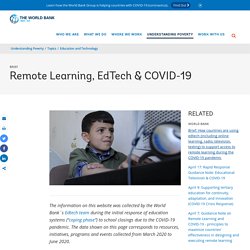

?amp_js_v=a6&_gsa=1&usqp=mq331AQFKAGwASA=#csi=0&referrer= %1$s&share= (CNN) — Con el aumento de casos de covid-19 en Estados Unidos, la transmisión del nuevo coronavirus está en su punto más alto.

Un nuevo análisis que analizó 54 estudios en más de 20 países encontró que los hogares donde alguien estaba enfermo de covid-19 seguían siendo puntos críticos para la transmisión del virus, incluso si la propagación general de la comunidad había disminuido. «Este es otro estudio que nos recuerda lo contagioso que es el virus que causa el covid-19 y lo difícil que es evitar infectar a otros si uno vive en una vivienda multigeneracional abarrotada», dijo la Dra. Leana Wen, analista médica de CNN, médico de Urgencias y profesora visitante de la Facultad de Salud Pública del Instituto Milken de la Universidad George Washington, que no participó en el estudio. How COVID-19 exposed challenges for technology in education.
School doors around the world have been closed for several months to contain the spread of the COVID-19 pandemic.

During this crisis, we have seen an incredible amount of large-scale efforts to use technology in support of remote learning. At the same time, this crisis has exposed the challenges for technology in education, including many inequities starting at the lack of access to computers and the internet. 1,6 billion students in 194 countries were impacted by school closures. What VUCA Really Means for You. Supporting teachers to maintain continuity of learning during school closures - COVID-19 education webinar #2. As a result of school closures to slow the spread of COVID-19, governments have had the unprecedented task to identify solutions to rapidly ensure that quality education has continuity as much as is feasible based on available resources and the existing school calendar.

In many countries, this includes an increasing shift to online learning using both synchronized and non-synchronized methods to maintain the same basic curriculum and learning objectives, while in contexts with low or no technology it may focus on alternative learning arrangements supported by different technologies, print, and innovative teacher-parent-community arrangements. The webinar aims at sharing information about how governments are supporting teachers and educators to continue to provide quality education to overcome COVID-19 related school closures. Special issue free access: A Response to Emergency Transitions to Remote Online Education.
Distance learning solutions. More on UNESCO's COVID-19 Education Response The list of educational applications, platforms and resources below aim to help parents, teachers, schools and school administrators facilitate student learning and provide social care and interaction during periods of school closure.
Most of the solutions curated are free and many cater to multiple languages. While these solutions do not carry UNESCO’s explicit endorsement, they tend to have a wide reach, a strong user-base and evidence of impact. They are categorized based on distance learning needs, but most of them offer functionalities across multiple categories. Resources to provide psychosocial support Digital learning management systems Systems built for use on basic mobile phones Systems with strong offline functionality Massive Open Online Course (MOOC) Platforms Self-directed learning content Mobile reading applications African Storybook(link is external) - Open access to picture storybooks in 189 African languages. Remote Learning, EdTech & COVID-19. The information on this website was collected by the World Bank´s Edtech team during the initial response of education systems (“coping phase”) to school closings due to the COVID-19 pandemic.

The data shown on this page corresponds to resources, initiatives, programs and events collected from March 2020 to June 2020. The resources on this page remain available but will not be updated. For more information about the phases of “managing continuity” and “improving and accelerating”, please visit the Lessons For Education during the COVID-19 crisis site. Large-scale, national efforts to utilize technology in support of remote learning, distance education and online learning during the COVID-19 pandemic are emerging and evolving quickly. This page attempts to curate useful resources and publish related documents collected and prepared by the World Bank's edtech team in support of national dialogues with policymakers around the world.
From the World Bank document library: Educational radio. Choice page. ?amp_js_v=a3&_gsa=1&outputType=amp-type&usqp=mq331AQFKAGwASA=#referrer= %1$s&share= REDS.
Coronavirus: Radiografía de tres brotes: así se contagiaron y así podemos evitarlo. Un restaurante abarrotado para celebrar el Año Nuevo chino.

Un centenar de contagios en un edificio de diecinueve plantas. Un grupo de devotos budistas que viajan en autobús para un rito religioso. Son tres brotes reales, minuciosamente documentados por las autoridades, en los que se produjeron múltiples contagios de covid. ¿Qué ocurrió en esos escenarios? ¿Cuáles fueron los factores de riesgo? In English An analysis of three Covid-19 outbreaks: how they happened and how they can be avoided La oficina En una sola estancia de un call center se multiplicó el riesgo de contagio al sumar cuatro factores decisivos: contactos múltiples, cercanos y prolongados en un espacio cerrado.
Los empleados del 'call center' del 11º piso trabajan agrupados en mesas de 13 puestos durante su jornada laboral. En algunas mesas, como esta, hasta nueve de los trece empleados dieron positivo. Esos trabajadores se ubicaban dentro de esta misma estancia con 137 trabajadores juntos en un entorno cerrado.